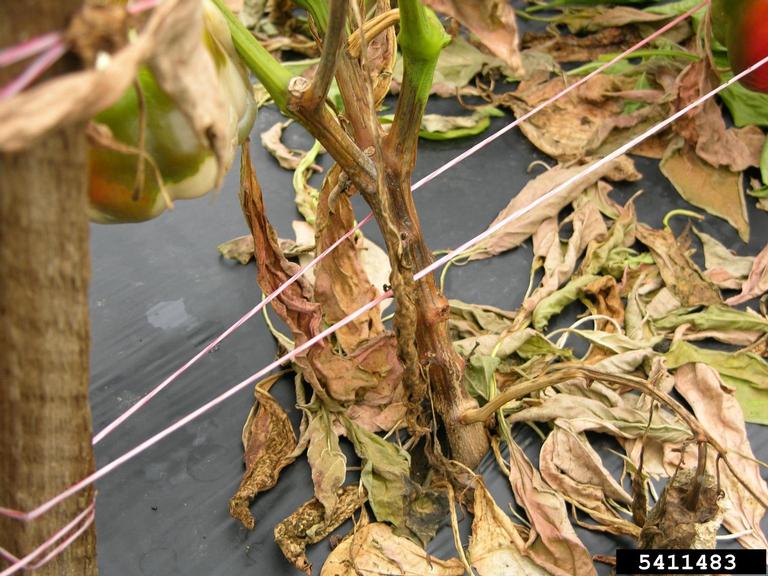Interactions
Capsaicin Production:
The most unique
adaptation that the Bhut jolokia and its close relatives of
the Capsicum genus is the development of the compound capsaicin
(structure below). Capsaicin is the molecule that causes the
heat feeling when it comes into contact with the back of the tongue
and the throat. Alone, this molecule is tasteless and
odorless, but still packs a huge punch. Pure Capsaicin's scoville
rating is at 15,000,000-16,000,000 units! There is a theory
that capsaicin was developed because of a mutualistic, symbiotic
relationship between pepper eating birds.
 Because capsaicin binds to the same pain receptors that are
activated when a mammal comes into contact with something hot, most
mammals do not even bother with attempting to eat the ghost chili's
fruit. This means that capsaicin was developed as a defense
mechanism to protect its self from predators. However, birds,
like the
great heron, have a different sensory pathway then mammals that makes
them immune to the capsaicin's irritating effects. The
immunity to the compound may not be a coincidence. when mammals eat
the chilies they grind up the seeds and digest them, but birds
swallow the seeds whole and do not digest them. After the
seeds pass through the digestive system, they are spread out to
different areas. This process means that the birds that commonly eat
the chilies help the plants reproduce while absorbing the nutrients
that the chilies provide.
Because capsaicin binds to the same pain receptors that are
activated when a mammal comes into contact with something hot, most
mammals do not even bother with attempting to eat the ghost chili's
fruit. This means that capsaicin was developed as a defense
mechanism to protect its self from predators. However, birds,
like the
great heron, have a different sensory pathway then mammals that makes
them immune to the capsaicin's irritating effects. The
immunity to the compound may not be a coincidence. when mammals eat
the chilies they grind up the seeds and digest them, but birds
swallow the seeds whole and do not digest them. After the
seeds pass through the digestive system, they are spread out to
different areas. This process means that the birds that commonly eat
the chilies help the plants reproduce while absorbing the nutrients
that the chilies provide.
Mycorrhizal Fungi:
Another symbiotic relationship that has been studied with not only the Bhut jolokia, but most chilies is its region, is the effect of arbuscular, mycorrhizal fungi when present with in the root system. The Fungi aids the roots in capturing and absorbing vital nutrients such as phosphorous, nitrogen, and sulfur. When compared to chili plants with out this fungi, the ones with the fungi experienced accelerated maturation and were overall healthier. The nutrients gained benefits both of the organisms, making this a mutualistic relationship
Phytophthora root rot is a disease of chili peppers that is caused by the fungi Phytophthora capsici. This disease causes the plant to wilt, lose its leaves, and eventually die. Chili plants usually become infected with this after a heavy rain or flood combined with high heat. This fungi is also known to cause spotting on the fruit, leaves, and stems of its host.
Rhizoctonia root rot is caused by the fungi Rhizoctonia solani. This fungi begins by infecting the lower stem. After moving up and down the stem, reddish-brown lesions appear on the plant. eventually the fungi will produce a false set of roots and steal the nutrients away from the plant causing it to die.


